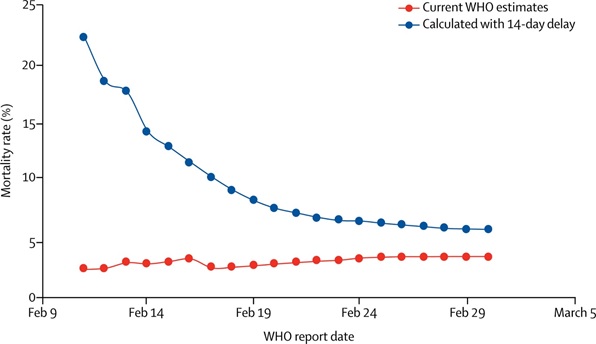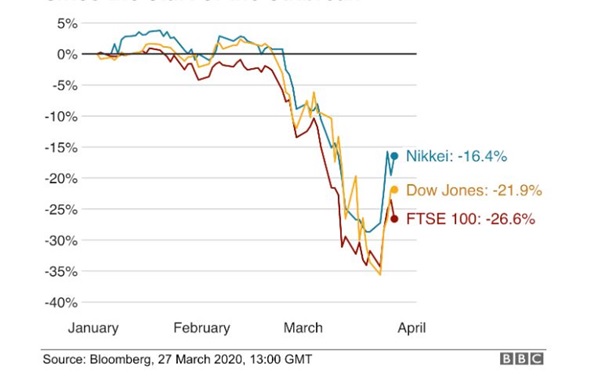 In light of the ongoing COVID-19 (coronavirus) pandemic, it is imperative to understand the origin of this virus. Previously, such pandemics were often a result of the spread of viruses such as H1N1, H5N1, and Severe Acute Respiratory Syndrome Coronavirus (SARS-CoV), among others.
In light of the ongoing COVID-19 (coronavirus) pandemic, it is imperative to understand the origin of this virus. Previously, such pandemics were often a result of the spread of viruses such as H1N1, H5N1, and Severe Acute Respiratory Syndrome Coronavirus (SARS-CoV), among others.
The majority of pandemics that occurred in the recent past have been known to have spread through cross-species transmission of microorganisms. It is said that during this transmission, the pathogen evolves; the entire procedure of evolution can be categorized into five stages.
- Stage 1 refers to the animal microbes that are not present in a healthy human body.
- Stage 2 refers to the disease-causing pathogens that have evolved, and now have the potential to transmit the disease in the human body. This stage includes pathogens that spread diseases such as Nipah, Rabies, and other viruses.
- The secondary transmission of virus in humans referred to as the stage 3.
- Stage 4 signifies the complete transmission of these pathogens along with their evolution in terms of animal genetics undergoing the complete sequence of human to human transmission.
- Lastly, stage 5 is limited to pathogens that spread diseases exclusively to humans, for instance, HIV and smallpox.
What makes a disease outbreak pandemic?
The outbreak of a disease can be declared a pandemic when the infectious disease possesses the potential to spread beyond geographic boundaries and lead to a high mortality rate. In addition, a pandemic also affects the economic, social, and political dynamics of a region. The occurrence of pandemics has increased in the past few decades. A major reason behind this trend is globalization and the ease of travel.
The World Health Organization declared the coronavirus outbreak a pandemic on March 11, 2020. The COVID-19 infection had 741,030 confirmed cases and had already claimed 35,114 lives by March 30, 2020 as per Coronavirus Cases by John Hopkins. Presently, the U.S. (143,532), Italy (97,689), and Spain (85,195) are dealing with the highest number of infected cases outside China (82,198).
A person affected with COVID-19 shows signs of cough and fever. The virus is responsible for injuring the respiratory tree of the body and causes inflammation. The inflammation makes it difficult for the oxygen to reach the bloodstream and for carbon dioxide to be removed. Some patients suffering from COVID-19 need support through respiratory devices, including ventilators, for breathing in oxygen.
How is the coronavirus pandemic different from outbreaks that occurred earlier?
The outbreaks similar to coronavirus that occurred earlier include Severe Acute Respiratory Syndrome (SARS) and Middle East Respiratory Syndrome (MERS). The novel coronavirus (COVID-19) is considered deadlier than the other two viruses and has affected more people over a particular period of time as compared to the other two outbreaks.
|
Comparison Table |
No. of Cases |
Deaths |
Mortality Rate |
|
COVID-19 |
741,030 (Increasing) |
35,114 (Increasing) |
3.6% (increasing) |
|
SARS |
8,437 |
813 |
9.63% |
|
MERS |
2,499 |
861 |
34.45% |
|
Source: NBC News |
|||
This virus, despite having lower fatality rate, has caused thrice the number of deaths as compared to the combined number of deaths caused by both MERS and SARS.
Although it has been observed that the symptoms of COVID-19 are similar to that of common influenza, this also makes it difficult for it to be detected. The death rate of COVID-19 is much higher, i.e. 0.1% in case of influenza and over 2% in case of COVID-19. In addition, COVID-19 is much more contagious than influenza, due to asymptomatic condition. The asymptomatic condition in COVID-19 refers to the people who are infected by the virus but do not show any symptoms.
Further, the non-availability of a vaccine or drug for treating this condition is the major cause of concern.

Source: World Health Organization Data, March 5, 2020
What is the economic impact of the recent coronavirus pandemic?
The coronavirus outbreak has not only infected hundreds of thousands of people, but has also led to thousands of deaths, has given rise to financial volatility, paused global economic activity, crashed stock markets, and caused a state of uncertainty, globally. Almost all stock markets and major indices including NIKKEI, Dow Jones, and FTSE have taken a hit due to the coronavirus outbreak.

Moreover, several industries have taken a massive hit owing to the outbreak, including aviation, entertainment, commercial real estate, and retail, among others. According to an article published by BBC.com, the travel and tourism industry is expected to be the most affected industry owing to the global lockdown. According to the article, most of the countries including those in EU and the U.S. have already banned travels into their geographical regions, in order to control the spread of the COVID infection. However, other industries have seen a surge in demand, such as those related to grocery and food delivery and remote working.
It is expected that a global economic recession can no longer be avoided. In times such as these, big data, predictive modelling, and artificial intelligence (AI) must be deployed to create and predict country-based scenarios of economic burden caused by different pandemics. This is expected to enable the understanding of the risk posed by different disease outbreaks not only on the healthcare industry but also on the economy as a whole, so that proper measures can be undertaken to mitigate the negative impact.
What are the facts disclosed by the ongoing research on COVID-19?
The novel coronavirus belongs to a family of viruses that have the potency to cause severe illness in its wake. The same was observed when diseases such as SARS broke out in 2003 in China and MERS broke out in 2012 in Saudi Arabia, both caused by viruses from the same family of coronavirus. Upon detection, the outbreak of the coronavirus was reported by Chinese authorities to WHO and the genome of SARS-CoV-2 was also made public so as to facilitate the research globally.
Upon analyzing the genomic sequencing data, it was observed the genetic template of spike proteins and the armatures present on the outside of the virus try to seize and penetrate the outer walls of cells. This particular virus targets the two major features of spike protein, first is the receptor-binding domain (RBD) and the second is the cleavage site. However, the backbone of the COVID-19 differed from the previous two viruses and resembled the viruses found in bats, snakes, and pangolins.
To further speedup the entire sequencing procedure, researchers across the globe are using different workflow approaches, including whole genome sequencing, RNA sequencing, and metagenomics sequencing to support the genomic epidemiology of the virus.
What are current methods of detection, screening, and diagnostics of COVID-19?
Doctors and researchers are utilizing different techniques to detect and screen COVID-19. Advanced techniques, and digital biomarker kits are being used along with artificial intelligence to detect and separate COVID-19 from common cases of pneumonia and influenza.
Considering the fatality of this virus, it is advised that early detection of the virus along with prevention from the infection is an ideal way to control the spread of the disease as there is no cure or vaccine as yet for this infection. Several companies are in the process of developing diagnostic kits for screening the virus. One such test has been launched by Abott Laboratories. It is a molecular diagnostic test, which detects and identifies fragments of the coronavirus genome in the body. These genomes can be detected quickly if they are present in high levels. The USP of this test is that it can detect the infection in five minutes and is also easy to carry.
Another test kit that has received emergency use authorization by the U.S. Food and Drug Administration is an in-vitro diagnostics test launched by BioFire Defense, a subsidiary of bioMérieux. The test kit is available in the name of BIOFIRE® COVID-19 test and can detect SARS-CoV-2 in approximately 45 minutes. This test detects the infection from a nasopharyngeal swab in transport media. The test is easy to use and requires minimal training and skills in molecular biology.
In addition, Polymerase chain reaction (PCR) testing is the primary method of screening COVID-19, especially in the United States. The reason why this test is being used is because it is the same type of test which was used for detecting SARS during its outbreak.
How can the risk of such virus outbreaks be minimized or prevented in the future?
Considering that the virus spread from the wet market of Wuhan, China, several wildlife health experts believe that to reduce the risk of such outbreaks, the wildlife wet markets need to be shut. In addition, there exists a need to build agile and robust healthcare systems, with a contingency plan in place to manufacture more ventilators, diagnostics kits, and personal protective equipment. It has been revealed by several epidemiologists that the warnings of such pandemics had been issued years before.
Tara Smith, an epidemiologist at Kent State University, mentioned that "If you look at the coronavirus literature, there were scientists who knew this could happen since at least 2015, or maybe even earlier.”
Moreover, research and development in the healthcare industry for clinical biomarker testing, AI-enabled drug discovery, infectious disease biomarker testing, DNA damage response, and other such technologies are imperative to be deployed as these possibly hold the solutions to such pandemics that can occur in future.
About the Publisher: BIS Research is a global market intelligence, research and advisory company that focuses on emerging technology trends that are likely to disrupt the market. Its team includes industry veterans, experts, and analysts with diverse backgrounds in consulting, investment banking, government, and academia.

